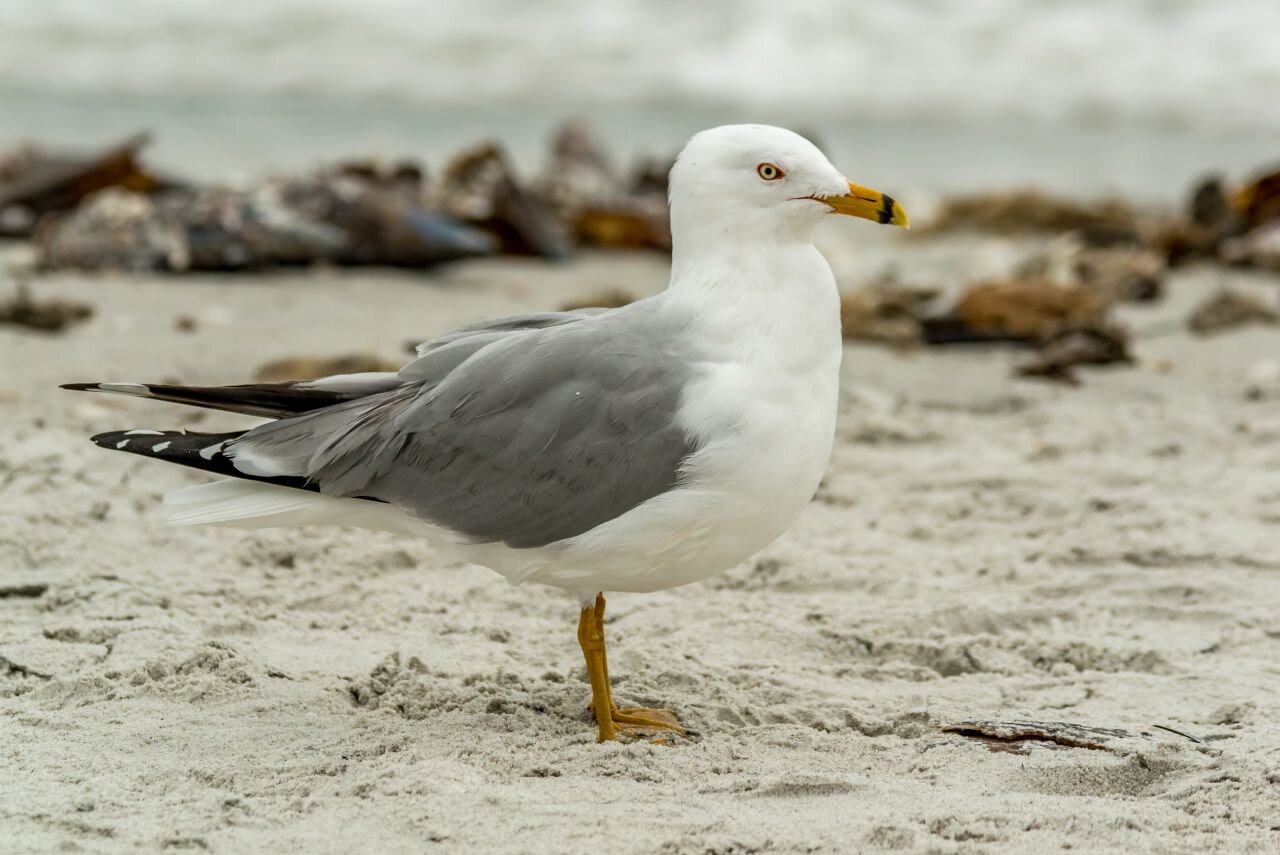Snail Kites and Limpkins until quite recently were almost impossible to find. In the 1970s and 1980s when I led field trips to Florida, I would contact local Florida birding experts during trip planning (in those antediluvian pre-computer, internet or cell phone days all calls were by expensive land-line dial phones only). None could give me specific location information, but would only offer very general possible spots where we might search for them.
On the first couple of group trips I brought from Pennsylvania to Florida we were unsuccessful in finding either species, but with much more determined effort and finally more specific information on the last such trip I led in 1988 we found one very distant, edge of telescope range, male Snail Kite on the Tamiami Trail at the northern boundary of Everglades National Park, and after much diligent searching, a very skittish pair of Limpkin in John Prince Park in Lake Worth. It’s amazing how different the two species’ situations are today.
While neither species may now be considered common, they certainly are not as rare as they were forty to fifty years ago. Snail Kites are still on the Federal Endangered Species List, and Limpkins, while not federally list as Endangered, are still protected by the Florida Endangered and Threatened Species Rule. A thorough survey in 1985 found only 407 Snail Kites in all of Florida, but the most recent estimate is now in the neighborhood of 2,000. And Limpkins are now much more easily found, with occasional appearances around the small lakes right in our Fort Pierce condo complex and their loud calls from a mile away in the Savannas County Park ringing daily in the late winter early spring as they prepare for nesting.
So what has made the difference? We have had an invasion of large exotic Apple Snails. First of all, please understand that Snail Kites feed exclusively on Apple Snails, and Limpkins, while also feeding on other mollusks, prefer Apple Snails for their primary diet. Snail Kites will find an Apple Snail and carry it to a post (photo 1 and top of page) where it will hold down the snail with its talons and use its hooked beak to cut the tender snail body from its shell, (photo 2) let the shell fall to the ground and proceed to eat the meat. (photo 3)
On a recent St Lucie Audubon Society field trip to Lakeside Ranch STA just east of Lake Okeechobee where we observed and photographed numerous Snail Kites, we were able to observe an obvious favorite Snail Kite eating spot. (photo 4) Florida Apple Snails are smaller, approximately two to three inches in size, while the invaders from South America grow up to five inches. Both examples appear to be in the pile at the base of the pole in the photo. Florida Apple Snail egg masses may contain 20 to 80 pea-sized eggs, while the invader’s masses can be several inches long and contain up to 2.000 very small pink eggs. (photo 5 from Platt’s Creek Preserve in Fort Pierce)
Curiously, Snail Kite bills have evolved into larger hooks in just the past few years to make it easier for them to dine on the larger invasive Apple Snails. Limpkin’s bills, on the other hand, do not have the convenient hook, so they have to hold the snail with the upper beak while digging out the snail meat with the lower beak. (photo 6) However, Limpkins will also eat clams as well, as this mother feeding her young just behind our Fort Pierce condo demonstrates. (photo 7)
Finally, I remind you that Snail Kites are dimorphic, in that females (photos 1 – 3) are brown while males are charcoal gray, (photo 8) but both sexes sport the diagnostic white rump patch. (photo 9) With the snail invasion both Snail Kites and Limpkins can now be found in various locations throughout southern Florida: several sites in western St Lucie County; Savannas County Park; Joe Overstreet Road; Lakeside Ranch STA; and of course, in the Everglades.
One might ask, “If we have so many large snails, why don’t we harvest them for escargot?” I simply ask, “How many of you, Dear Readers, have EVER eaten escargot?” While I know they are a French delicacy, they simply have not caught on here in America. But there is an even better reason: these Apple Snails, both the native Florida variety and the South American invaders are water snails, while the French escargot snails are land snails, thus completely different creatures. (Surprise: Apple Snails are indeed edible. https://www.applesnail.net/content/various/eating_snails.htm.)
In any event, we should leave the snails to the Snail Kites and Limpkins and worry about all the other invaders that have a more direct impact on our lives, like Covid viruses. Now if we could only find a bird or ANY other kind of creature that would like to dine on the Covid virus we would really have something. At least then we wouldn’t have to use Lysol.
References: Apple Snail invasion with photos of the different size snail egg masses, Florida vs. exotic: https://myfwc.com/research/freshwater/species-assessments/mollusks/apple-snails/
Snail Kites on the Endangered Species list: https://fl.audubon.org/birds/everglade-snail-kite#:~:text=Today%20the%20Everglade%20Snail%20Kite,government%20as%20an%20endangered%20species.
407 Snail Kites found after the drought in 1985, but now estimated to be over 2000. https://www.encyclopedia.com/environment/science-magazines/florida-snail-kite
Limpkins protected on Florida’s Endangered and Threatened Species Rule: https://myfwc.com/wildlifehabitats/profiles/birds/waterbirds/limpkin
For more on the Snail Kite bill size evolving, see: https://www.nytimes.com/2017/11/28/science/birds-beaks-evolution-snails.html#:~:text=But%20the%20number%20of%20snail,to%20handle%20the%20bulkier%20snails.
Earlier Hart Beat column on Snail Kites: “The Other Kites” at page 85 of the book.




























